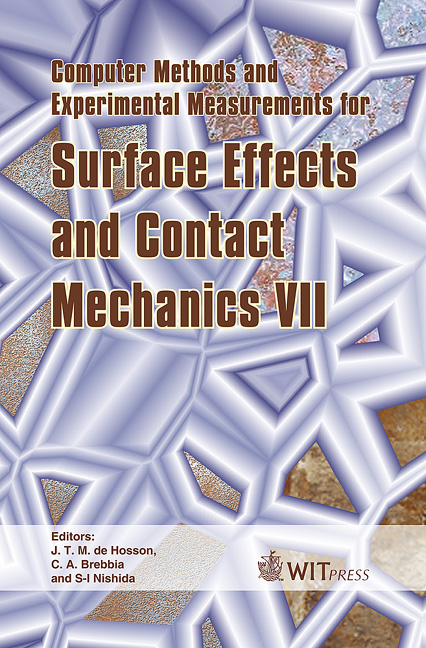Fretting Fatigue Strength And Life Estimation Considering The Fretting Wear Process
Price
Free (open access)
Transaction
Volume
49
Pages
10
Published
2005
Size
1,381 kb
Paper DOI
10.2495/SECM050081
Copyright
WIT Press
Author(s)
T. Hattori, M. Yamashita & N. Nishimura
Abstract
In this paper we present the estimation methods of fretting wear process and fretting fatigue life using this wear process. Firstly the fretting-wear process was estimated using contact pressure and relative slippage. And then the stress intensity factor for cracking due to fretting fatigue was calculated by using contact pressure and frictional stress distributions, which were analyzed by the finite element method. The S-N curves of fretting fatigue were predicted by using the relationship between the calculated stress intensity factor range (∆K) with the threshold stress intensity factor range (∆Kth) and the crack propagation rate (da/dN) obtained using CT specimens of the material. Finally fretting fatigue tests were conducted on Ni-Cr-Mo-V steel specimens. The S-N curves of our experimental results were in good agreement with the analytical results obtained by considering fretting wear process. Using these estimation methods we can explain many fretting troubles in industrial fields. Key words: fretting fatigue, fretting wear, contact pressure, fracture mechanics, threshold stress intensity factor range, crack propagation rate, crack initiation, stress singularity parameters. 1 Introduction Fretting can occur when a pair of structural elements are in contact under a normal load while cyclic stress and relative displacement are forced along the contact surface. This condition can be seen in bolted or riveted joints [1,2], in the shrink-fitted shafts [3,4], in the blade dovetail region of turbo machinery [5,6], etc. During fretting the fatigue strength decreases to less than one-third of that without fretting [7,8]. The strength is reduced because of concentrations of
Keywords
fretting fatigue, fretting wear, contact pressure, fracture mechanics, threshold stress intensity factor range, crack propagation rate, crack initiation, stress singularity parameters.





